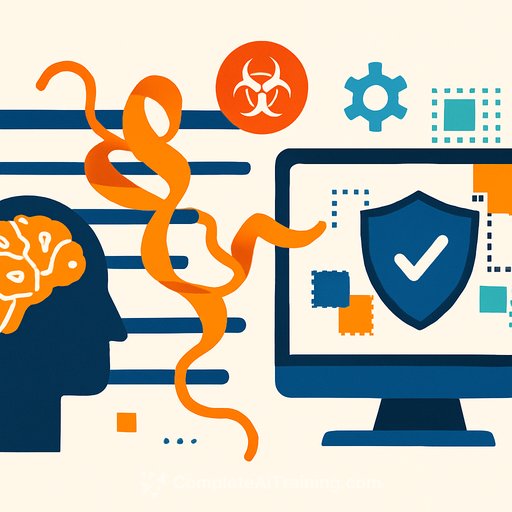AI-designed proteins test biosecurity safeguards
Biosecurity screening software that monitors DNA and protein manufacturing orders just got smarter. New patches reported in an Oct. 2 study indicate that these systems can better detect AI-altered toxic or viral proteins that previously slipped through.
Researchers showed that slight, AI-driven edits to known harmful proteins can evade basic filters. Strengthening specific gaps in the screening stack helped flag many of those risky designs.
Why this matters for science and R&D teams
DNA and protein synthesis providers are a critical control point for biosafety. As AI tools accelerate protein design, adversarial attempts to mutate known threats will continue.
Screening must move beyond exact matches. Domain- and motif-level checks, similarity scoring across multiple algorithms, and frequent database updates raise detection odds.
What changed in the latest patches
- Expanded reference sets and faster update cadence to reduce blind spots.
- Similarity scoring that catches near-miss variants rather than only exact sequences.
- Motif/domain-level detection to identify functional risk even when sequences are altered.
- Layered flagging to route higher-risk orders for expert review.
Practical steps for labs, providers, and procurement
- Work with synthesis vendors that follow recognized screening frameworks such as the International Gene Synthesis Consortium (IGSC).
- Implement defense-in-depth: sequence screening, threat intelligence feeds, human-in-the-loop review, and audit trails.
- Red-team your workflows with benign test cases to validate detection and triage without exposing sensitive content.
- Set update SLAs for screening databases and models; stale references invite gaps.
- Establish incident response: document false negatives/positives and feed them back into screening improvements.
- Train staff on safe use of generative tools and clear escalation paths for questionable designs.
Context from the study
The authors demonstrated that AI tweaks to known harmful proteins can bypass naive filters. Patching those weakness points restored many catches and reduced missed detections. The takeaway: continuous iteration beats one-off deployments.
For background on peer-reviewed reporting standards, see Science.
Bottom line
AI will keep generating novel variants; screening must keep pace. Teams that combine updated tools, layered review, and disciplined operations will reduce risk without stalling legitimate research.
If your team is upskilling on responsible AI for R&D, explore focused learning paths at Complete AI Training.
Your membership also unlocks:






